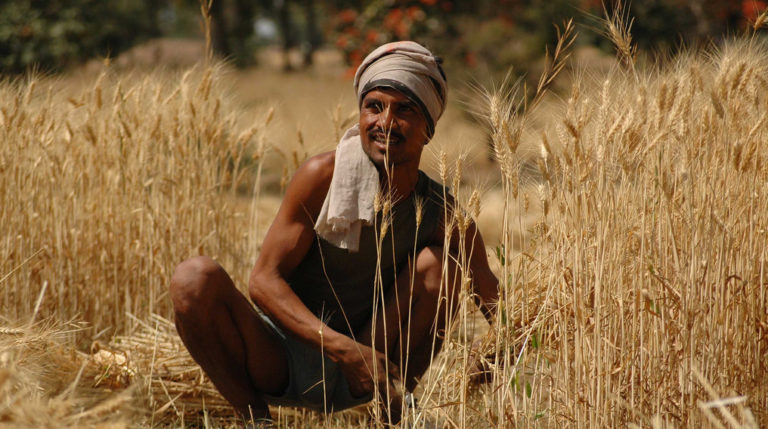The first Indian Noble-laureate R.N Tagore’s prophetic observation on the state of Indian agrarian crisis made around hundred years ago that, ‘Food is a source of wealth but food-production is a source of endless misery’ still stands equally relevant today as well. It’s not that the issue of the agrarian crisis has not been paid any attention to by the successive ruling governments of the Country but certainly not the quality and quantity of attention that it genuinely deserved.
The ‘Royal Commission of Agriculture’ in the chairmanship of Linlithgow had been set up to examine India’s agricultural and rural economy as early as 1926 that had submitted its report in 1928. Later on, Gregory Committee in 1943 (mainly to focus on food availability, supplies, distribution, and control price), Maitra committee (1950), Mehta committee (1957), Venkatappaiah committee (1966) had also been set up. Almost 20 years after India got independence, the government had set up ‘National Commission on Agriculture’ in 1970 to review the progress of agriculture and suggests for its improvement and modernization that submitted its report in 1976. Finally, in 2004, the ‘National Commission for Farmers’ was constituted that submitted its fifth and the final report in October 2006, popularly known as ‘M.S Swaminathan Committee Report’.
Despite this much of study, analysis and policy suggestions, the Indian agriculture continues to be in persistent crisis, and the reasons for it are multifarious. Undoubtedly, the recommendations of all these committees and commissions have played an instrumental role in future policy formulations for agricultural improvement and its modernization in the country but on the other hand, not all these recommendations have been accepted by the governments of the days.
It is a paramount paradox that the ‘State’ hitherto has not been able to end the state of endless misery of the Indian farmers. These farmers despite facing all adversities, have, because of their resilience and strong spirit, been able to make the Country not just self-sufficient in demand for food but also a net exporter of agri-products, making the country to occupy seventh position globally. This is a great irony that the hands that feed India have themselves become helpless or are in the process of becoming so.
The percentage of farmers living below the official poverty-line in our Country is 22.5 percent. Imagine, it’s just little less than the quarter of the Country’s farmer population. Recently, the Committee on Doubling Farmer’s income (D.F.I) has been set up by the present government that aims to double the farmer’s income by 2022 but only time can tell if this can indeed turn into reality. Something needs to be done on a priority basis to improve this sad situation because no nation can afford to snub this sort of continuing crisis in agriculture, more particularly, the country like India that engages around 58% of its workforce in this sector. The extent and magnitude of the agrarian crisis is certainly a bothersome premonition for the future state of the nation.
The persistent crisis in the Indian agriculture is not the outcome of any single problem. It has a diverse range of complex conundrums and intricacies in its way of improvement and modernization. This is the reason that so many of committees have been constituted hitherto to examine and find out the reasons of agrarian crisis in India, yet it continues to be in a sorry state of affairs. These committees and Commissions have identified a range of problems and have offered policy measures too, to the best of their understanding of the issues.
Nonetheless, if one asks me to identify one most important cause behind the problems in Indian agriculture, I shall identify it to be ‘Productivity of agriculture’. Because it’s the productivity levels in agriculture that ultimately determines the income of the farmers. As the famous saying goes in rural India that doctors want their children to become doctors, judges want their children to become judges in future, officers want their children to become officers but no farmer wants his children to become farmers in future. If one analyses the reasons behind this, he/she shall find that it’s because the agriculture is not a profitable enterprise.
The one most important reason behind the persistent crisis in agriculture is that it has proved to be an income-deficit sector hitherto, and one important reason among variety of reasons for it being income-deficit is the ‘Productivity of agriculture’, and therefore I identify it to be a principal problem for the agricultural crisis in the Country. The statistics show that in India, per-unit area productivity is quite lower in comparison to the other major crop-producing countries of the world.
Therefore, to increase the income of the farmers, the productivity in agriculture must increase at any cost. Once the productivity level improves and the income of the farmers start increasing, the distress in the agricultural sector shall start diminishing gradually. The policy measure that may be considered to enhance the productivity in the Indian agriculture can be an increase in public investment in the agriculture-related infrastructure that has sadly witnessed a considerable decline in the past. This public investment should be more particularly with respect to irrigation, water conservation, road connectivity, drainage, land development, research development etc. as suggested in ‘M.S Swaminathan Committee Report’ as well. But, I think that only public investment can’t cure this deep-seated malaise of the Indian agriculture and therefore the private sector too must consider investing in the agricultural infrastructure. Presently, in Indian agriculture, the private sector investment is merely 1.75%.
For an increase in the productivity of agriculture, not only public and private investment in the field of agricultural infrastructure is required, but also the timely and adequate supply of credit, particularly to the small farmers, is one of the most basic necessities and a prerequisite for it to succeed. For this, the government needs to expand its outreach to the poor and the penniless farmers having a low visibility area of humanity.
The situation needs to be improved urgently because the crisis of agriculture is a crisis of the Country. It shall have an adverse effect on the other sectors too and on the national economy as a whole, more specifically on food supply, prices of food grains, employment, health and nutrition, labor market, cost of living, foreign exchange earning etc.
Further, read more :



